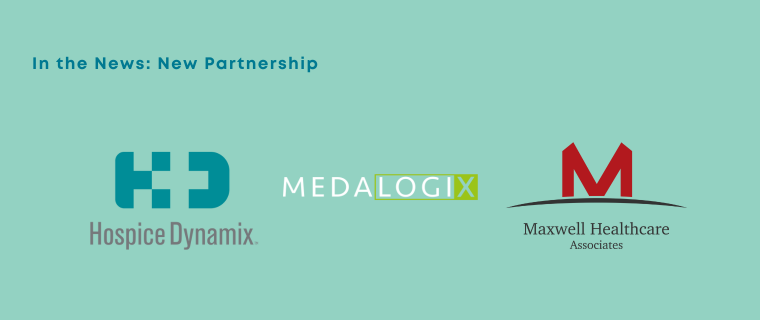Healthcare Matters: Tech Is Changing Life At The End-Of-Life
This week ourCEO, Dan, is the featured author in aguest post at Healthcare Matterswhere he talksabout end-of-life challenges and the positive impact newtechnology is making.
How Technology is Helping Patients Live The End of Their Lives
Healthcare Matters would like to thank Dan Hogan for the following guest post. Dan is founder and CEO of Nashville, Tennessee-basedMedalogix, a health care technology company that provides analytics and workflows to home health providers.
In America, we don’t like to talk about death. We avoid it at all costs—and that’s costing us. It’s costing us our care quality at the end of our lives.
Although death is a natural part of life, it feels unnatural to talk about it. Why? Well, our American ideals may be to blame. “Never give up!” “You can beat the odds!” “You can do anything you put your mind to!”
This is undeniably a winning approach to life. As Americans, it’s gotten us far. But when we apply these ideals at the end of life, we lose.
- We tend to isolate our dying.According to a CNN poll and a Centers for Disease Control study, 70 percent of people want to die at home. Only 25 percent get to. 70 percent of us die in the hospital.
- We are in pain. A recent National Institute of Nursing Research (NINR) study shows we’re experiencing more pain at the end of life than we used to and 26 percent of us are depressed.
- We spend a lot of money for treatment we don’t want.Patients with chronic illness in their last two years of life account for about 32 percent of total Medicare spending.
I founded Medalogix, a technology company that uses predictive analytics to help improve, if not solve these challenges, by identifying which patients will benefit most from hospice care. In a nutshell, our technology sifts through patient data to identify those who are likely to pass away within 90 days. Equipped with this information, clinicians can delve deeper into those patients’ records to assess the situation further. At that point, clinicians and a specific patient’s physician may have a conversation with the patient about his or her end-of-life care options, like hospice care.
And that’s what it’s all about—facilitating the conversation about end-of-life preferences. We all deserve to have the best information possible to help us plan and make an informed decision about how we want to live our final days. Analytics adds an additional and valuable dimension of information.
A peer-reviewed study by a Vanderbilt University data scientist shows that this technology can decrease early death on hospice census by 30 percent. That means that those patients who opt for hospice care get to receive the benefit longer. They have more time to get their affairs in order and spend time with their loved ones.
By pairing sophisticated analytics with a clinician’s experience and instinct, the right patients are hearing about their options at the right time.
And death might finally be a little easier to talk about.
Related Blogs

MHA, Hospice Dynamix, and Medalogix Announce Partnership
SHOREVIEW, MN, February 20, 2024 — Maxwell Healthcare Associates (MHA), ...

Announces Release of Pulse Referrals & Admissions Modules Backed by Generative AI
Pulse modernizes admissions workflows with proprietary documentation imp...
Amedisys Finds Answer Key in Medalogix Pulse
Amedisys Expands Home Health Clinical Episode Management Partnership wit...


